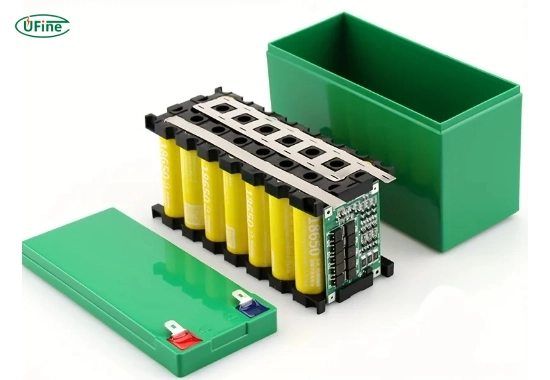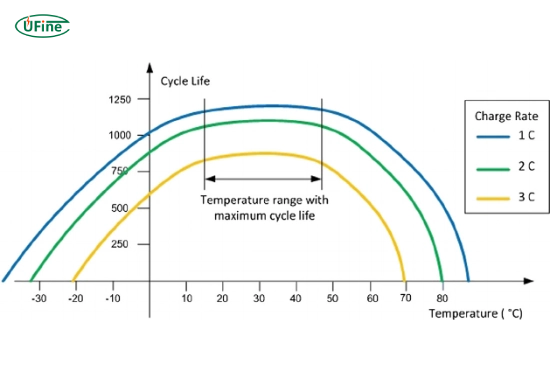When searching for the best-insulated battery box for lithium batteries, it is essential to consider factors such as size, insulation material, portability, and safety features. These boxes protect your lithium batteries from extreme temperatures and physical damage, helping them last longer and perform better.
In this guide, we will cover everything you need to know to select the right insulated battery box for your specific needs. Whether you’re using lithium batteries for camping, boating, solar setups, or off-grid systems, this article will help you make a smart, informed choice.
Part 1. What is an insulated battery box?
An insulated battery box is a container designed to hold and protect batteries—especially lithium batteries—from harsh environmental conditions. It reduces heat loss in cold weather, keeps batteries cool in hot weather, and shields them from moisture, dust, and physical shocks.
These boxes are often used in outdoor or mobile applications, such as RVs, boats, solar power banks, and off-grid energy systems. Insulation maintains your battery at an optimal temperature, which is vital for the life and performance of lithium batteries.
Artikel Terkait: Difference Between Battery Case and Battery Casing
Part 2. Why do lithium batteries need insulation?
Lithium batteries are sensitive to temperature changes. If it gets too cold, their performance drops sharply. If it becomes too hot, it can degrade more quickly or become hazardous.
An insulated battery box helps:
- Maintain a stable temperature
- Extend battery lifespan
- Improve charging efficiency
- Prevent overheating or freezing
Without insulation, your expensive lithium battery may fail sooner than expected. That’s why a quality insulated box is a smart investment.
Part 3. What should you consider when choosing an insulated battery box?
Before buying, here are the key features you should look for:
1. Size compatibility
Ensure the box fits your battery with enough space for cables and ventilation. Measure your battery’s dimensions and compare them with the internal size of the box.
2. Insulation material
Look for boxes with high-density foam, thermal blankets, or double-wall construction. These materials help maintain a stable internal temperature.
3. Durability
Select a box made of durable, weather-resistant materials such as ABS plastic or powder-coated steel. If you’re going off-road or into harsh environments, durability matters.
4. Ventilation and airflow
Some lithium batteries generate heat while charging or discharging. A good box allows for controlled ventilation while still offering insulation.
5. Portability
If you frequently need to move the battery (e.g., for camping or marine use), opt for a box with handles, wheels, or a compact design.
6. Additional features
Look for extras like:
- USB ports
- DC outlets
- Battery monitoring screens
- Solar input terminals
These features turn a simple box into a portable power station.
Part 4. How does temperature affect lithium batteries?
Lithium battery performance is highly temperature-dependent:
| Temperature | Battery Behavior |
|---|---|
| Below 0°C (32°F) | Reduced capacity, slower charging |
| 20–25°C (68–77°F) | Ideal operating range |
| Above 45°C (113°F) | Risk of overheating and capacity loss |
That’s why using an insulated battery box can help keep your battery in a safe zone, especially in extreme climates.
Part 5. Can I use a regular battery box for lithium batteries?
You can, but it’s not recommended. Regular battery boxes often lack the following:
- Proper insulation
- Ventilation for thermal regulation
- Shock resistance
- Weatherproofing
Lithium batteries are more fragile than lead-acid ones and need special protection. An insulated battery box is designed with these needs in mind.
Part 6. Top materials used in insulated battery boxes
Here are some of the most common materials used in high-quality boxes:
- Polyethylene (PE): Lightweight, durable, water-resistant
- ABS plastic: Strong, impact-resistant
- Foam insulation: High thermal resistance
- Stainless steel: Very durable, corrosion-resistant
- Rubber seals: Keep moisture and dust out
Choose a box with multiple layers or composite materials for better insulation and protection.
Part 7. What size battery box do I need?
To find the right size:
- Measure your battery’s dimensions (length, width, height).
- Add at least 1 inch of clearance on all sides for airflow and wiring.
- If using multiple batteries, ensure the box can accommodate them side by side or stacked.
Don’t forget to check the weight limits if you plan to carry the box.
Part 8. Best use cases for insulated battery boxes
Insulated boxes are ideal for:
- RV camping: Protects your power source from cold nights
- Marine systems: Prevents moisture damage
- Off-grid solar setups: Keeps batteries safe from weather
- Emergency backup systems: Ensures reliable performance
- Portable power stations: Easy to move and recharge
A quality insulated battery box in all these setups means peace of mind and better long-term performance.
Part 9. Mistakes to avoid when buying an insulated battery box
Avoid these common pitfalls:
- Buying the wrong size: Always measure first!
- Ignoring insulation quality: Not all foam is created equal
- Skipping weatherproof features: Essential for outdoor use
- Overpaying for unnecessary features: Choose what you truly need
- Not checking compatibility with lithium batteries: Some boxes are built only for lead-acid units
Being aware of these mistakes can save you money and frustration.
Part 10. How do you maintain an insulated battery box?
To keep your box in top condition:
- Clean it regularly: Wipe down dust and moisture
- Check seals and hinges: Replace worn-out parts
- Store in a dry place: Reduces corrosion risk
- Avoid direct sunlight for extended periods: Prevents material degradation
- Inspect after travel: Look for cracks or damage
A little maintenance goes a long way in keeping your batteries safe.
Part 11. FAQs about insulated battery box
What is the purpose of an insulated battery box?
An insulated battery box maintains a safe temperature for lithium batteries, protects them from environmental damage, and extends their lifespan.
Can I build my insulated battery box?
Yes, if you have the right materials and tools. Use thermal insulation foam, sturdy casing, and weatherproof seals.
Do lithium batteries need insulation?
Yes! Lithium batteries lose efficiency in cold temperatures and can overheat in hot weather. Insulation helps maintain optimal performance.
How long do lithium batteries last in a battery box?
With proper insulation and care, lithium batteries can last 5–10 years inside a high-quality battery box.
Are insulated battery boxes waterproof?
Many are, but not all. Look for boxes labeled IP65 or higher for waterproof performance.
Related Tags:
More Articles

How to Choose the Right Battery for Blower?
Choosing the right blower battery? Consider voltage, capacity, chemistry & usage. This guide helps match the best battery for peak performance.
7 Critical Elements on a Lithium Battery Shipping Label
What must be on a lithium battery shipping label? Learn 7 key elements to ensure safety, legal compliance, and correct handling across all transport modes.
UN3481 vs UN1323: Classification Guide for Lithium Batteries
UN3481 vs UN1323: UN3481 is for lithium batteries in equipment, while UN1323 covers flammable solids and doesn't apply to batteries.
10000mAh Battery Explained: How Long It Lasts, How It Works
A full guide on 10000mAh li-ion batteries, voltage, usage time, and tips. Discover how a 10000mAh battery works, how long it lasts, and how to choose.
10440 Battery Guide: Size, Voltage, Capacity, Uses & More
Understand 10440 batteries better—size, voltage, safety, and how they compare to AAA. Find the best fit for your high-performance devices.






